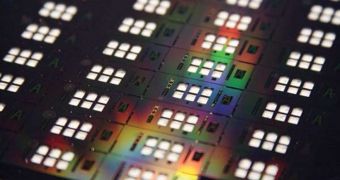Sequencing the first human genome was a momentous achievement. It took more than 13 years and $3 billion to complete, and was basically a composite result, assembling DNA data from a host of individual volunteers. As a proof-of-concept, the first sequenced genome was worth every penny, but now research scientists need to find ways of doing the same thing on a large scale, in shorter times and in affordable price ranges. Many new sequencing methods promise to bring the costs down to about $1,000, on par with many existing medical tests, while the future promises to deliver innovations that will see entire genomes mapped for as little as $100, Technology Review reports.
But experts warn that there are many difficult challenges ahead. For starters, “drowning” in the vast pool of data that DNA sequencing produces is still very easy, and many researchers fall into this trap. Interpreting the influence that genetic variations have on immediate and long-term health is still something that is tremendously difficult to do, but some scientists say that this will become easier as more DNA data from many individuals become available. A number of experts, including Harvard Medical School geneticist and sequencing pioneer George Church, say that about 1,500 genes are essential to doctors when analyzing a genome, as they are considered to be “medically predictive.”
They can basically indicate if an individual has a propensity for developing heart conditions, which means that action could be taken early on, to prevent that. Experts say that, for example, children who are predisposed to developing heart conditions could be instructed to exercise from an early age, so as to avoid the influence of their genes as much as possible. Naturally, they would still be more likely than others to develop such diseases, but a healthy lifestyle could see them remaining well even when in their senior years. Such tests are not science-fiction anymore, with Church predicting that the $1000 barrier for sequencing will fall within two to three years.
Microfluidic devices are the best bet to reducing the costs even further. “The key thing that's driving all of the next-generation sequencing is miniaturization,” Church explains. These instruments imply that only small amounts of chemicals are needed for analysis, thus fewer expenses associated with conducting these investigations. The company BioNanomatrix is, for example, developing such devices that rely on driving DNA molecules through 50 nanometer-wide channels in order to create a sequence. In about five years, maybe a little more, experts believe that the cost of sequencing will go as low as $100 thanks to such innovations.

 14 DAY TRIAL //
14 DAY TRIAL //